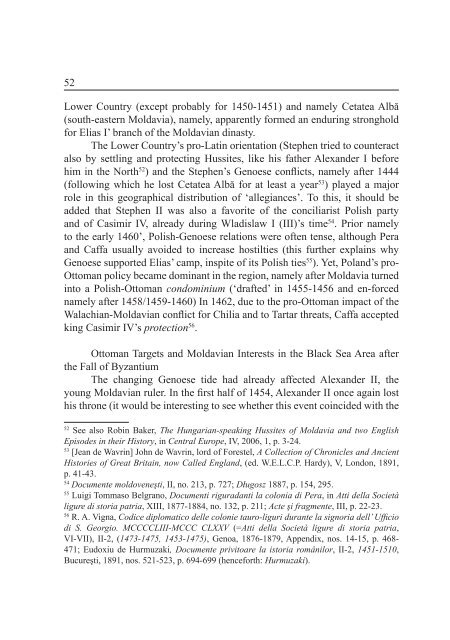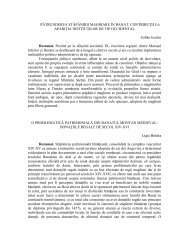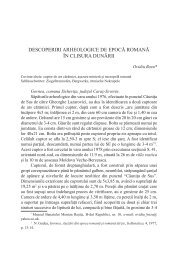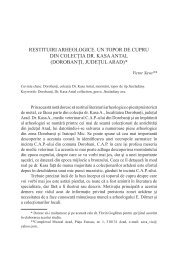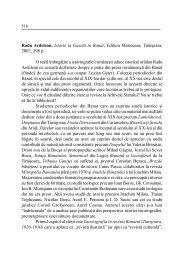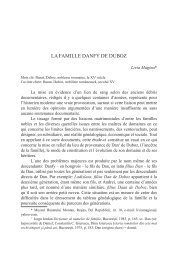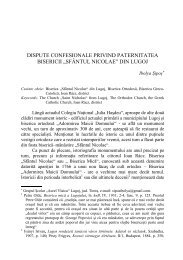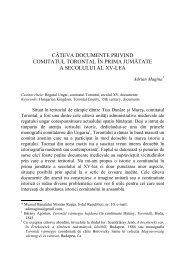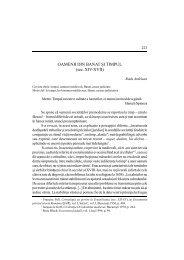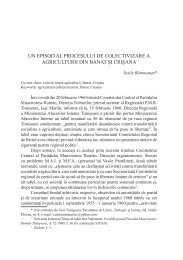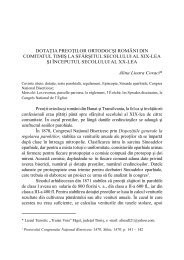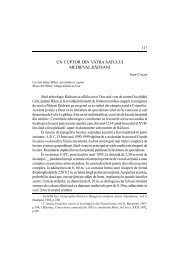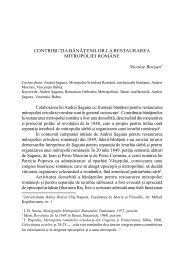jOHN HUNYADI BETwEEN BELGRADE AND CETATEA ... - Banatica
jOHN HUNYADI BETwEEN BELGRADE AND CETATEA ... - Banatica
jOHN HUNYADI BETwEEN BELGRADE AND CETATEA ... - Banatica
Create successful ePaper yourself
Turn your PDF publications into a flip-book with our unique Google optimized e-Paper software.
52<br />
Lower Country (except probably for 1450-1451) and namely Cetatea Albă<br />
(south-eastern Moldavia), namely, apparently formed an enduring stronghold<br />
for Elias I’ branch of the Moldavian dinasty.<br />
The Lower Country’s pro-Latin orientation (Stephen tried to counteract<br />
also by settling and protecting Hussites, like his father Alexander I before<br />
him in the North 52 ) and the Stephen’s Genoese conflicts, namely after 1444<br />
(following which he lost Cetatea Albă for at least a year 53 ) played a major<br />
role in this geographical distribution of ‘allegiances’. To this, it should be<br />
added that Stephen II was also a favorite of the conciliarist Polish party<br />
and of Casimir IV, already during wladislaw I (III)’s time 54 . Prior namely<br />
to the early 1460’, Polish-Genoese relations were often tense, although Pera<br />
and Caffa usually avoided to increase hostilties (this further explains why<br />
Genoese supported Elias’ camp, inspite of its Polish ties 55 ). Yet, Poland’s pro-<br />
Ottoman policy became dominant in the region, namely after Moldavia turned<br />
into a Polish-Ottoman condominium (‘drafted’ in 1455-1456 and en-forced<br />
namely after 1458/1459-1460) In 1462, due to the pro-Ottoman impact of the<br />
walachian-Moldavian conflict for Chilia and to Tartar threats, Caffa accepted<br />
king Casimir IV’s protection 56 .<br />
Ottoman Targets and Moldavian Interests in the Black Sea Area after<br />
the Fall of Byzantium<br />
The changing Genoese tide had already affected Alexander II, the<br />
young Moldavian ruler. In the first half of 1454, Alexander II once again lost<br />
his throne (it would be interesting to see whether this event coincided with the<br />
52 See also Robin Baker, The Hungarian-speaking Hussites of Moldavia and two English<br />
Episodes in their History, in Central Europe, IV, 2006, 1, p. 3-24.<br />
53 [jean de wavrin] john de wavrin, lord of Forestel, A Collection of Chronicles and Ancient<br />
Histories of Great Britain, now Called England, (ed. w.E.L.C.P. Hardy), V, London, 1891,<br />
p. 41-43.<br />
54 Documente moldoveneşti, II, no. 213, p. 727; Długosz 1887, p. 154, 295.<br />
55 Luigi Tommaso Belgrano, Documenti riguradanti la colonia di Pera, in Atti della Società<br />
ligure di storia patria, XIII, 1877-1884, no. 132, p. 211; Acte şi fragmente, III, p. 22-23.<br />
56 R. A. Vigna, Codice diplomatico delle colonie tauro-liguri durante la signoria dell’ Ufficio<br />
di S. Georgio. MCCCCLIII-MCCC CLXXV (=Atti della Società ligure di storia patria,<br />
VI-VII), II-2, (1473-1475, 1453-1475), Genoa, 1876-1879, Appendix, nos. 14-15, p. 468-<br />
471; Eudoxiu de Hurmuzaki, Documente privitoare la istoria românilor, II-2, 1451-1510,<br />
Bucureşti, 1891, nos. 521-523, p. 694-699 (henceforth: Hurmuzaki).


